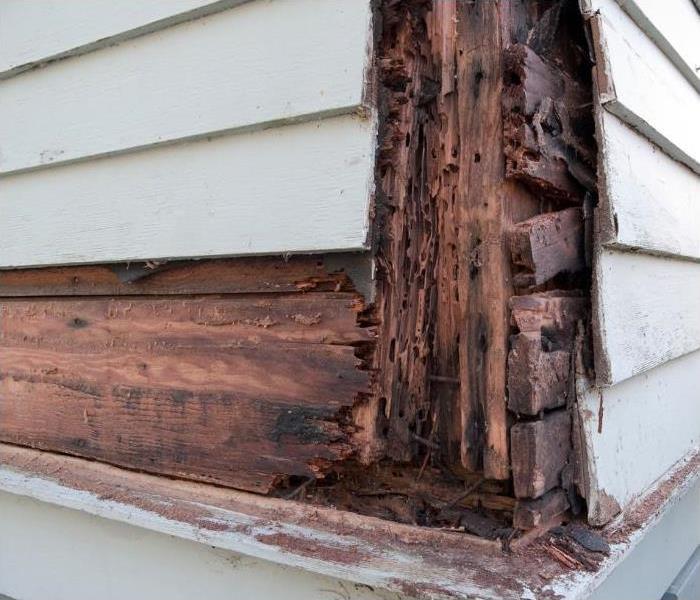3 Things to Avoid Doing After a Flood in Salt Lake City, UT
9/2/2024 (Permalink)
Flooding can be a devastating experience for homeowners, especially in areas like Salt Lake City, UT, where sudden storms and heavy snowmelt can lead to unexpected deluges. Once the waters recede, it's crucial to act quickly and wisely to mitigate damage and ensure a safe return to normalcy. However, there are several common mistakes that homeowners often make in the aftermath of a flood. Avoiding these pitfalls can make a significant difference in the recovery process. Here are three things to avoid doing after a flood in Salt Lake City.
1. Ignoring Safety Precautions
Safety should be your top priority after a flood. It's tempting to jump straight into cleanup efforts, but doing so without proper precautions can be dangerous. Here are key safety measures to keep in mind:
Avoid Entering Unsafe Structures: Floodwaters can weaken the structural integrity of your home. Before entering, check for damage such as cracks in the foundation or shifting of the building. It's essential to have a professional inspect the property before you step inside.
Beware of Electrical Hazards: Water and electricity are a dangerous combination. Do not touch electrical appliances or outlets if they are wet. Turn off the power to your home from the main breaker if you suspect electrical damage or if you see water near electrical sources. Only turn the power back on once a licensed electrician has assessed the safety of your system.
Use Protective Gear: Floodwaters can be contaminated with sewage, chemicals, and other hazardous materials. Always wear protective clothing, including gloves, boots, and a mask, to minimize your exposure to these contaminants.
2. Delaying Cleanup and Restoration
Time is of the essence when it comes to flood damage. Delaying cleanup can lead to more severe problems, such as mold growth and structural deterioration. Here’s why you should avoid procrastinating:
Mold Growth: Floodwaters introduce moisture that can lead to mold growth within 24-48 hours. Mold not only poses health risks but also can be challenging and expensive to remove once it establishes itself. Start drying out your home as soon as possible. Use dehumidifiers, fans, and open windows to speed up the drying process. For extensive water damage, consider hiring a professional restoration service to ensure thorough drying and prevent mold development.
Structural Damage: Water can cause wood to swell, warp, and rot, leading to long-term structural issues. Promptly remove and replace damaged materials such as drywall, insulation, and flooring. If you delay, you risk further damage that could compromise the safety of your home and result in more costly repairs.
Salvageable Items: The sooner you begin sorting through your belongings, the better chance you have of salvaging items. Remove wet furniture, clothing, and personal items and assess what can be cleaned or needs to be discarded. Properly clean and disinfect salvageable items to prevent further damage and contamination.
3. Attempting DIY Repairs Beyond Your Expertise
While some cleanup tasks can be manageable for a homeowner, others require professional expertise. Avoid taking on repairs that are beyond your skill level, as this can lead to further complications. Here’s when to call in the pros:
Complex Water Damage Restoration: If the flood has caused extensive damage, such as compromised structural elements or significant water damage to walls and ceilings, it’s best to hire a professional restoration service. Professionals have the equipment and expertise to handle complex issues like extensive water extraction, structural repairs, and thorough drying.
Mold Remediation: If you notice mold growth or suspect hidden mold, do not attempt to handle it yourself. Mold remediation requires specialized equipment and techniques to safely remove mold and prevent its return. Professional mold remediation services can ensure that the problem is fully addressed and that your home is safe to inhabit.
Insurance Claims and Repairs: Navigating insurance claims can be tricky. Professionals in flood damage restoration often work closely with insurance companies and can assist in documenting damage, filing claims, and ensuring that you receive the compensation you're entitled to. They can also provide accurate estimates for repairs and restoration, which can be crucial for your insurance process.
Floods can leave a lasting impact on your home and your peace of mind. By avoiding these common mistakes—ignoring safety precautions, delaying cleanup, and attempting DIY repairs beyond your expertise—you can better manage the aftermath of a flood and facilitate a smoother recovery process. In Salt Lake City, where flood risks are a reality, staying informed and prepared is key. Remember that professional help is available, and utilizing their services can make a significant difference in your recovery journey. Prioritize safety, act swiftly, and seek expert assistance to ensure your home and health are protected during this challenging time.

 24/7 Emergency Service
24/7 Emergency Service
